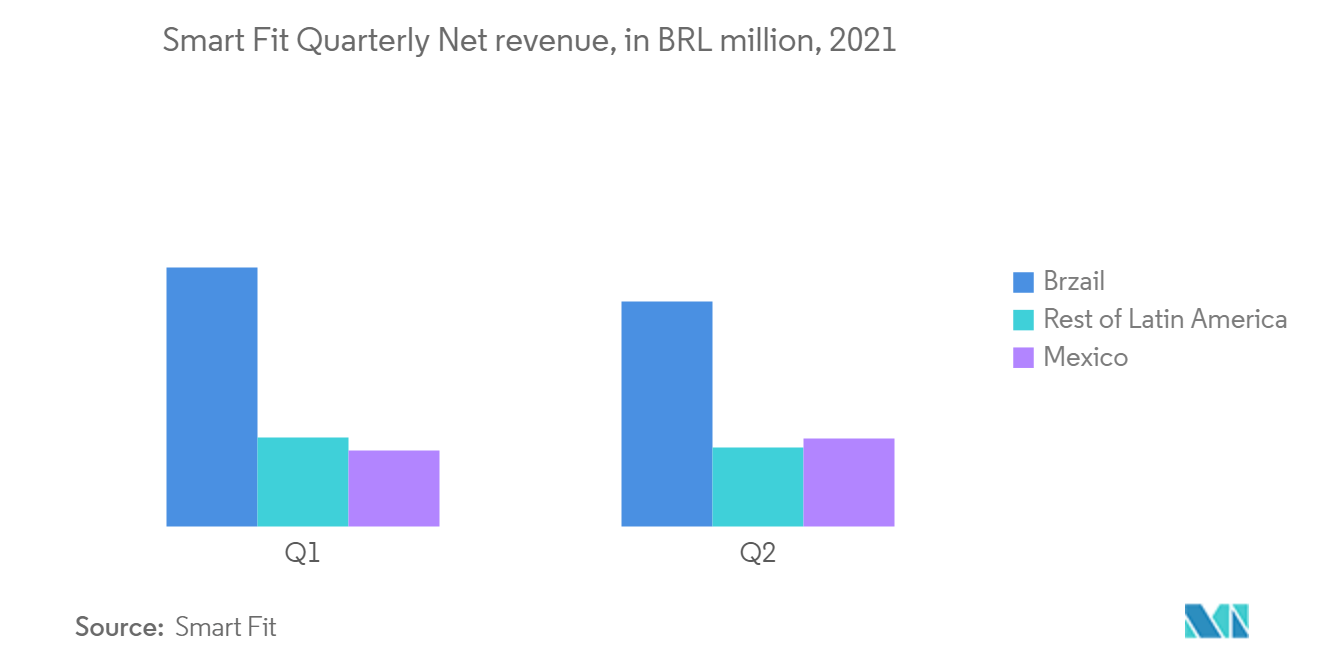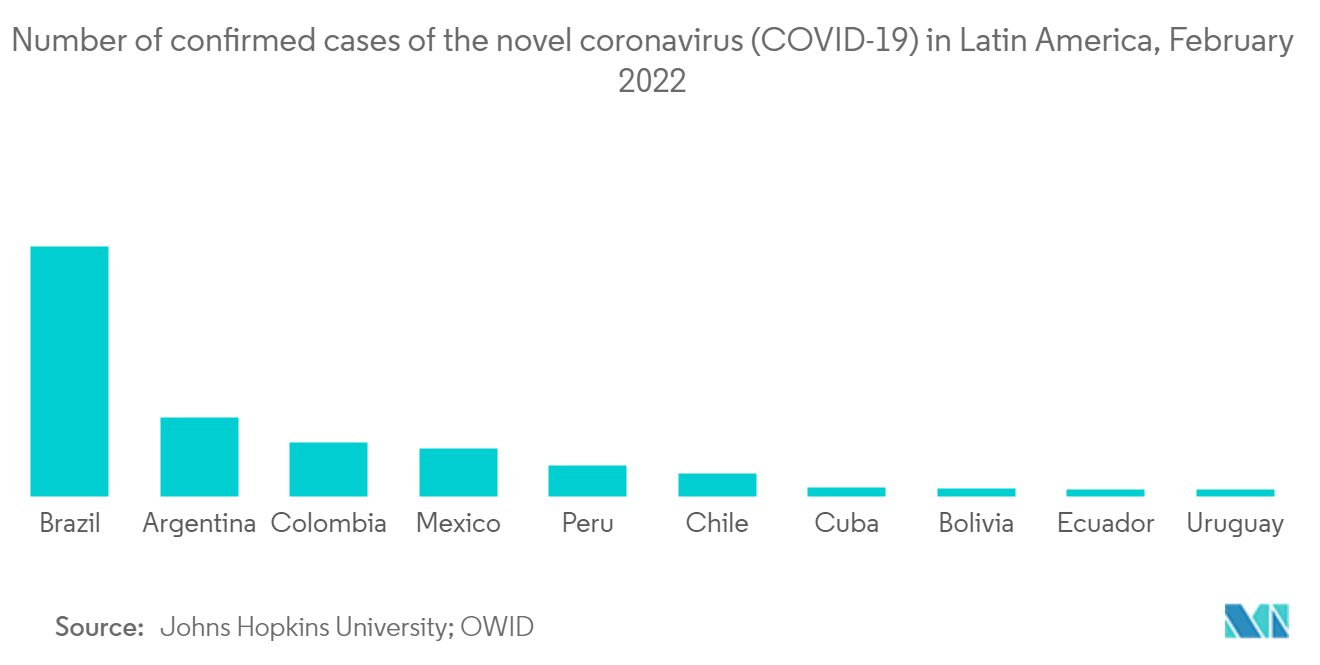Market Trends of LA Biomedical Sensors Industry
This section covers the major market trends shaping the Latin America Biomedical Sensors Market according to our research experts:
Growing Demand for fitness devices to Drive the Market Growth
- The incidence and prevalence of lifestyle-related illnesses such as diabetes and hypertension are expected to rise over the projection period as a result of the sedentary lifestyle. Several physiological factors, such as blood sugar levels and blood pressure, must be continuously monitored in some of these disorders. This enables the integration of healthcare data with portable medical equipment, which may then be provided to clinicians for real-time data access and error reduction. Furthermore, the rising death rate from noncommunicable illnesses is a major source of concern, necessitating a greater focus on tailored monitoring and care. This is expected to boost demand for wearable medical devices and the research industry in the long run.
- The COVID-19 epidemic has increased the importance of wearable medical devices in the healthcare industry. Various firms working on wearable medical products from across the world are joining the market, where wearable medical equipment can detect early warning symptoms of viral infection. The Ava Bracelet, which was originally designed as a fertility tracker, is now being utilized to aid in the fight against the coronavirus. This bracelet monitors heart rate variability, breathing rate, and skin temperature and can be used to follow virus symptoms. This pandemic presents a once-in-a-lifetime opportunity. As a result of this, the demand for wearables is expected to rise.
- The rising frequency of chronic diseases, as well as rising death rates, is a major source of concern for both individuals and government agencies. As a result, healthcare practitioners can provide tailored care that includes ongoing and remote patient monitoring. These can also be worn for up to 24 hours without interfering with daily activities. As a result of the numerous benefits it provides, the demand for wearable medical devices, as well as the studied market, is expected to increase over the projection period.
- This market has been boosted by the advent of smartwatches from firms such as Samsung, Sony, and Nike, among others. Because of developments in sensor technology in the region, Latin America is estimated to account for around 4% of the global market in 2022.
- For instance, according to Cisco Systems, the unit sales of wearable devices in Latin America are expected to reach 39 million by 2021. Thus, the growing penetration of smart wearables in the region is further expected to create a demand for a more diverse set of wearables with temperature sensing capabilities. All these factors are expected to boost the studied market in the region.

Healthcare industry to hold substantial share in the market
- The COVID-19 pandemic has devasted the industries globally and persists as newer virus variants are emerging over the last year. The demand for various types of sensors, such as temperature sensors, witnessed a significant increase in demand across the region. As the outbreak very highly impacted the region, the region significantly contributed to the market's growth.
- Mobile technologies are paving the way to revolutionize the diagnosis of diseases and monitoring patient treatment. As wearables are personal devices that provide continuous monitoring of vital parameters, they can be used as a clinical tool for determining the patterns of a particular disease, providing a better understanding of the disease, and continuously monitoring users' health. Wearable fitness technology has weaved itself into people so that FitBits and smartwatches are seen as mainstream. The future of wearable devices is estimated to witness continuous growth over the coming years.
- Accelerometers measure blood pressure, heart rate, glucose level, and oxygen in the blood. These sensors find critical applications in devices, such as defibrillators and pacemakers. Therefore, the growing healthcare concern among people and increasing healthcare awareness has propelled the need for sensor technologies and monitoring devices that are able to sense and provide feedback to the users about the health status for increased safety.
- Further, medical sensors in healthcare have the capability to revolutionize the way a disease is cured or prevented. Advancements in engineering, technology, and material sciences have given way to highly refined sensors used in medical research. These kinds of sensors enable innovation and provide opportunities for thought-controlled prosthetics and other personal assistive devices for people with paralysis, amputated limbs, and other movement impairments driving the market.
- Expanding medical device companies and expanding diagnostic and therapeutic treatment choices are creating more jobs. Furthermore, technological breakthroughs such as silent MRIs are projected to move North American Open MRI systems forward. The majority of the major players are focusing their efforts on producing new open systems that are both strong and have good image quality. This is expected to drive demand for open MRI systems, propelling the open MRI systems market in Latin America to new heights. Healthcare companies generally focus on offering improved healthcare facilities and goods to increase their economic potential through new product releases, partnerships, and training specialists for various Open MRI systems. Increased investment in MRI machines will also benefit the region's studied market.


